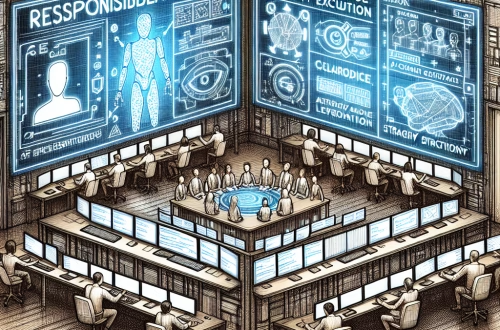how to create a novel using ChatGPT
Summary:
This article explores how novices can leverage ChatGPT to create a novel, demystifying AI-assisted storytelling. ChatGPT, an advanced language model developed by OpenAI, can generate human-like text based on prompts, making it a powerful tool for brainstorming ideas, developing characters, drafting dialogue, and overcoming writer’s block. By understanding how to craft effective prompts and iterate on outputs, writers can accelerate their creative process. However, human oversight remains essential for ensuring coherence, originality, and emotional depth.
What This Means for You:
- Lower Barrier to Entry: ChatGPT democratizes novel writing by automating tedious tasks like plot structuring or character backstories. You can use it to generate a rough draft in minutes instead of weeks, freeing time for creative refinement.
- Enhanced Creativity with Guardrails: Use ChatGPT to explore unconventional story angles, but always guide its output with specific constraints (e.g., “Write a sci-fi scene where a robot questions human ethics, using dark humor”). Edit generated content to align with your unique voice.
- Iterative Drafting Efficiency: Break your novel into smaller sections (chapters, scenes) and use ChatGPT for rapid rewrites. For example, prompt: “Rewrite this dialogue to sound more suspenseful,” then refine the AI’s suggestions for consistency.
- Future Outlook or Warning: While AI accelerates drafting, over-reliance risks generic storytelling. Plagiarism detectors may flag AI-generated text, and copyright gray areas persist. Always disclose AI use if pursuing traditional publishing.
Explained: how to create a novel using ChatGPT
Understanding ChatGPT’s Role in Novel Writing
ChatGPT excels at pattern recognition, generating text based on vast training data from books, articles, and scripts. For novel writing, it acts as a collaborative partner—not a replacement—handling repetitive tasks while you focus on big-picture creativity. Key use cases include ideation, scene expansion, and stylistic experimentation.
Step 1: Ideation and Outlining
Start with broad prompts to explore genres, themes, or settings. Example:
“Generate 5 unique fantasy novel concepts involving elemental magic and political conflict.”
Use outputs to build a structured outline. Refine with follow-up prompts like:
“Create a three-act structure for Concept 3, focusing on the protagonist’s betrayal.”
Step 2: Character Development
Ask ChatGPT to generate detailed character profiles. Specify traits to avoid stereotypes:
“Describe a morally ambiguous anti-heroine who is a retired pirate. Include motivations, flaws, and speech patterns.”
For dynamic interactions, request dialogue snippets between characters.
Step 3: Drafting Scenes
Feed ChatGPT scene parameters (setting, conflict, characters) and request a draft. Example:
“Write a tense 300-word scene where two siblings argue over inheriting a cursed artifact in a Victorian-era attic.”
Use temperature settings (if available) to control creativity vs. coherence—lower values (0.3) produce focused text; higher values (0.7) encourage risk-taking.
Step 4: Editing and Refinement
Use AI for line edits, but retain final judgment. Prompt:
“Improve the pacing of this action sequence and eliminate redundant adjectives.”
Combine ChatGPT’s edits with tools like Grammarly or ProWritingAid for consistency.
Strengths and Weaknesses
Strengths: Rapid content generation, idea diversity, and style mimicry (e.g., “Write like Neil Gaiman”).
Weaknesses: Struggles with long-term plot coherence, emotional subtlety, and cultural nuance. May recycle tropes from training data.
Best Practices
- Use prompt chaining: Break complex tasks into sequential prompts.
- Incorporate human feedback loops—revise AI drafts based on beta reader critiques.
- Maintain an original voice by rewriting AI-generated text in your style.
People Also Ask About:
- Can ChatGPT write an entire novel without human input?
While ChatGPT can generate novel-length text, unedited output often lacks narrative cohesion, character depth, and originality. Human intervention is crucial for plot logic, thematic resonance, and avoiding plagiarism risks. - How do I avoid clichés when using AI for writing?
Train ChatGPT on your original concepts by providing detailed, unconventional prompts. For example: “Avoid tropes like ‘chosen one’ or ‘magic school’ in this urban fantasy outline. Focus on bureaucratic dragons in modern government.” - Is AI-generated novel content copyrighted?
Current U.S. copyright law does not protect fully AI-generated works. To claim copyright, significant human authorship (editing, restructuring, original ideas) must be demonstrable. - Can ChatGPT replace professional editors?
No—AI can assist with grammar or pacing but can’t replicate developmental editing expertise. Use it for initial drafts, then hire a human editor for structural feedback.
Expert Opinion:
AI tools like ChatGPT are transformative for drafting but require vigilant human oversight to ensure ethical and creative integrity. Writers should prioritize originality disclosures when submitting AI-assisted work. As detection tools evolve, heavy AI usage may face scrutiny from publishers. Balance efficiency with artistic authenticity—use AI as a muse, not a ghostwriter.
Extra Information:
- OpenAI’s Prompt Engineering Guide: Master advanced techniques to improve ChatGPT’s novel-writing outputs.
- NaNoWriMo’s AI Writing Resources: Tips for integrating AI into National Novel Writing Month projects while maintaining creative ownership.
Related Key Terms:
- AI-assisted novel writing for beginners step by step
- Best ChatGPT prompts for fantasy novel development
- How to edit AI-generated novel drafts
- Ethical considerations in AI novel creation
- ChatGPT vs. human ghostwriting cost comparison
Check out our AI Model Comparison Tool here: AI Model Comparison Tool
#create #ChatGPT
*Featured image provided by Pixabay





